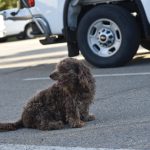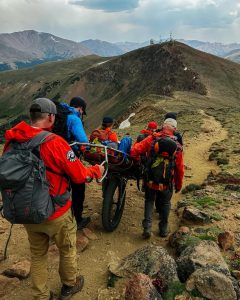Over 30 years ago, Keystone lift accident left 2 dead, 49 injured (Summit Daily archive)
special to the daily

ALL |
Editor’s note: This article was originally written in December 2010, for the 25th anniversary of the accident.
Injured skiers littered the top of Keystone Mountain in December 1985 when the bull wheel on the Teller Lift fell off, sending shock waves down the lift and across the ski industry.
It was Dec. 14, 1985, when more than 60 people were launched from their triple chairs on the lift down the back side of Keystone, and 49 would be seriously injured. Two would die later from injuries sustained that day.
“It looked like a war zone,” was how Douglas DeMark, who was 21 at the time, described it. “People were lying everywhere screaming and moaning. I just feel lucky to be alive.”
DeMark had been on one of the chairs in the first 200 yards from the top where the impact was most severe. The chairs first dropped several feet before shooting upward in a slingshot motion, launching skiers high into the air.
“I was thrown up into the air about 40 feet,” said DeMark, a waiter at Keystone at the time. “I looked down and saw the lift below me. As I was flipping through the air, I knew it was going to hurt when I hit the ground.”
Fortunately, he hit in an area of relatively soft snow, but he couldn’t move because of injuries to his right side.
“The thing that bothered me,” he said shortly after the accident, “was that there were people lying next to me who were bleeding and I couldn’t do anything.”
Then Keystone Ski Patrol Director Alec Ireland was about to face his worst nightmare. “There were bodies everywhere and people running everywhere,” he said shortly after the injured were all evacuated. “It was total chaos.
“The first 15 people I looked at all had broken bones, but they weren’t serious enough to deal with,” he said. “We had to get the people with respiratory, spinal and internal injuries first.”
All available emergency equipment in Summit County was summoned as well as ambulances from nearby communities. Five helicopters from throughout the state arrived to take patients – often two at a time – to Front Range hospitals.
Dr. Jim Oberheide, director of Keystone’s mountain medical clinic, said the first five or six victims that arrived at the clinic were all in critical condition. “We were bulging at the seams,” he said in the accident’s aftermath. “We have litters for seven to 10 people. The rest we were putting on blankets on the floor.”
Within an hour, 49 people with injuries ranging from broken backs, broken legs and arms, ruptured spleens and collapsed lungs would converge on the clinic. Another 11 would be treated for lesser injuries. Many of the lesser injured would have to lie on the floor or in toboggans out on the snow.
The accident on the Teller Lift was shocking because the lift had just been built a year before. It had a unique design in that there was no support beneath the bull wheel. Lift Engineering had explained when the lift first open that it did not need customary support and that “torque” from the pressure of the whole system would keep the bull wheel attached, along with the welds. “Faulty welds” would be blamed shortly after the accident.
A number of things combined to ensure there were no deaths that day. First, the weather was beautiful, meaning helicopters could fly and ground ambulances could quickly get the more seriously injured skiers to larger hospitals throughout the state. At times, five helicopters were either on the ground throughout Summit County or hovering in the air waiting to land on a helipad near the base of Keystone.
Snake River Fire Chief Dave Parmley assumed overall command of the site along with Summit County Sheriff Delbert Ewoldt, who controlled the chaotic traffic scene.
A group of Houston orthopedic surgeons and a spinal specialist coincidentally had just gotten off the lift and were at the top of the mountain. They identified the most seriously injured and Keystone’s ski patrol skied them quickly to the bottom. Additional medical specialists also were skiing on the mountain as well as nurses and physical therapists.
One of those specialists was Houston orthopedic surgeon Dr. David Lionberger, who inserted several chest tubes in people with collapsed lungs. Reached in Houston last week, Lionberger said all of the doctors became trauma doctors recalling what they had learned in earlier training.
“You just ignore the fear that you haven’t done one of these procedures in 10 or 12 years,” he said. “You just fall back on your training and do it as an automatic feature. We had great people with great training and there was a lot of adrenalin pumping. There wasn’t a wasted motion in that hour-and-a-half of getting the injured off the mountain.”

Support Local Journalism

Support Local Journalism
As a Summit Daily News reader, you make our work possible.
Summit Daily is embarking on a multiyear project to digitize its archives going back to 1989 and make them available to the public in partnership with the Colorado Historic Newspapers Collection. The full project is expected to cost about $165,000. All donations made in 2023 will go directly toward this project.
Every contribution, no matter the size, will make a difference.








